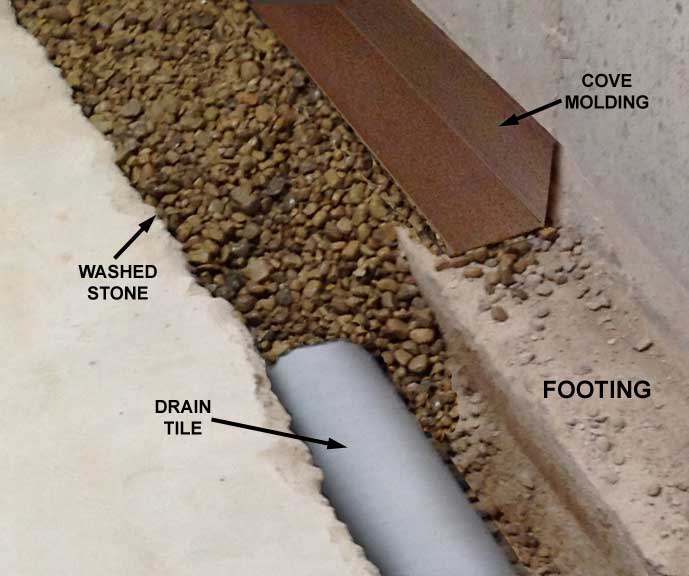Things about Waterproofing Auckland
Table of ContentsSome Known Factual Statements About Waterproofing Auckland Waterproofing Auckland - QuestionsThe Basic Principles Of Waterproofing Auckland The Greatest Guide To Waterproofing AucklandThe Main Principles Of Waterproofing Auckland A Biased View of Waterproofing Auckland
Waterproofing buildings is the approach of creating an obstacle over surfaces of foundations, roofing systems, walls and various other architectural members of buildings to stop water infiltrations via these surface areas. In summary, building surfaces are made waterproof as well as water-proof. Study has actually revealed that waterproofing just represents 1% of a building's building costs yet when neglected, it can be in charge of practically 90% of the damages.
You need to make certain that you obtain the right kinds of waterproofing materials for your one-of-a-kind requirements. To help you in the option process, listed below are the 5 types of waterproofing in building and construction: Cementitious waterproofing items are considered as the most convenient waterproofing products to use. These are conveniently available from suppliers of stonework products like, as well as they're easy to blend and use.
Polyurethane liquid membrane layer method of waterproofing is typically utilized for the level roofing system location and revealed to weathering. This kind of waterproofing material is really sensitive to wetness content present. Consequently, before application, it is vital to be extra careful in examining the moisture web content of the concrete piece, or else peeling or de-bonding of membrane layers might take place after some time.
It offers much more flexibility than the cementitious types of waterproofing. At the end of the day, there are many distinct types of waterproofing materials in the market.
The Definitive Guide for Waterproofing Auckland
Just how does basement waterproofing job? Interior basement waterproofing functions by dealing with water infiltration where it manifests itself inside.

Exterior cellar waterproofing strategies reduce this stress by redirecting water into a gravel-covered ground drain, which carries it far from your home. While both techniques of cellar waterproofing job well, they repair the problem in various methods. Inside cellar waterproofing remains a preferred alternative because of its relatively small cost point, while outside basement waterproofing functions for house owners who favor to prevent interior building and construction work.
Call us today to get more information regarding the cellar waterproofing work we conduct for Georgia house owners.
Little Known Questions About Waterproofing Auckland.
Interior areas of our house should be kept dry from roofing to cellar. Waterproofing the residence prior to building and construction will avoid these problems. If you water resistant your home, it will avoid damage later on.
y. It helps in reducing moisture inside your home and thereby protects points inside your residence from damages created because of humidity or water exposure. It is also important for the honesty of the structure. Relying on the level of water damage or owner choice, waterproofing systems can be mounted inside your home or outdoors.
The poly acrylic chemical service is prepared which is made use of to secure the breakage or leakage on the wall as well as terrace which will certainly be look at here a strong waterproof base as well as shield as well as preserve the toughness of any type of framework. This is done by an extremely trained specialist team. You require to make certain that premium items are utilized for the procedure.
The last step is to place two coats of poly acrylic chemical with white concrete on the surface. is ideal for buildings as well as frameworks that are already having leak or web link damage in addition to for new structures to stay clear of leakage in future. This procedure helps in keeping the life and high quality of the structure as well as guarantees that there is no damages to the building as a result of the rainfalls.
Examine This Report about Waterproofing Auckland

Apply a thick cement slurry concrete the surface of the slab. Over this layer, use a completing layer with cement sand mortar 1:4 as well as water-proofing substance as per the style.
Make an edge in between the parapet and also the sloping slab on the second day. Treat this waterproofing for fifteen days, with damp gunny bags spread out over it.
Unknown Facts About Waterproofing Auckland
Check the thickness of the Shahbad ceramic tiles. It needs to be in between 32mm learn this here now to 40mm (1 1/4 to 1 1/2). Keep the break joint pattern while dealing with the Shahabad tiles for the base. After fixing the Shahabad tiles, grout the joints with concrete slurry entirely. Seal the joints in between the Shahabad floor tiles with the aid of C.M.
For the cellar, the arrangement of rain gutter as well as sump is made in P.C.C. itself as well as Shahabad base is also prepared in the same fashion. The seamless gutter is offered an appropriate slope towards the sump. This provision is a preventive measure versus the periodic entry of rainwater in the cellar. Over the plastered Shahabad base, boating slab is cast and the R.C.C.
Rough Shahbad floor tiles are after that repaired to the vertical pardi from the exterior. Apply neat cement paste on the 4 corners and in the facility of the 25mm (1) Shahabad ceramic tile, Press this tile strongly over the R.C.C. pardi in line as well as degree. At once, repair only an elevation of 1.
Little Known Facts About Waterproofing Auckland.
filled up with concrete slurry and no more slurry is soaked up. Cure it for a minimum of 7 days, a minimum of 10 times a day. After curing, offer the last jointless waterproof plaster coat in C.M. 1:4 over the harsh Shahabad. The whole procedure discussed over kinds a box around the framework and does not enable any kind of water to seep with or leakage from the cellar.